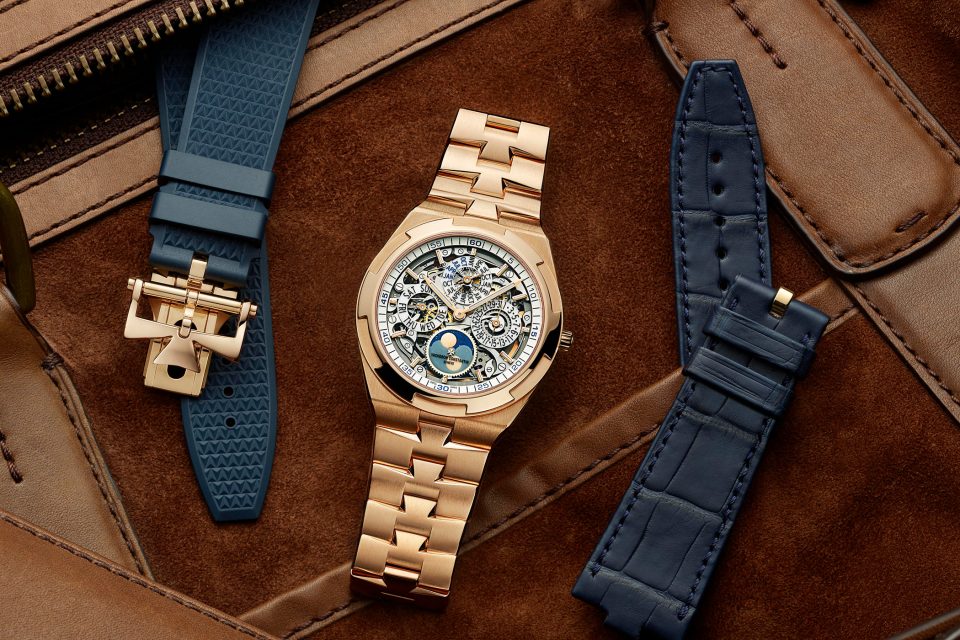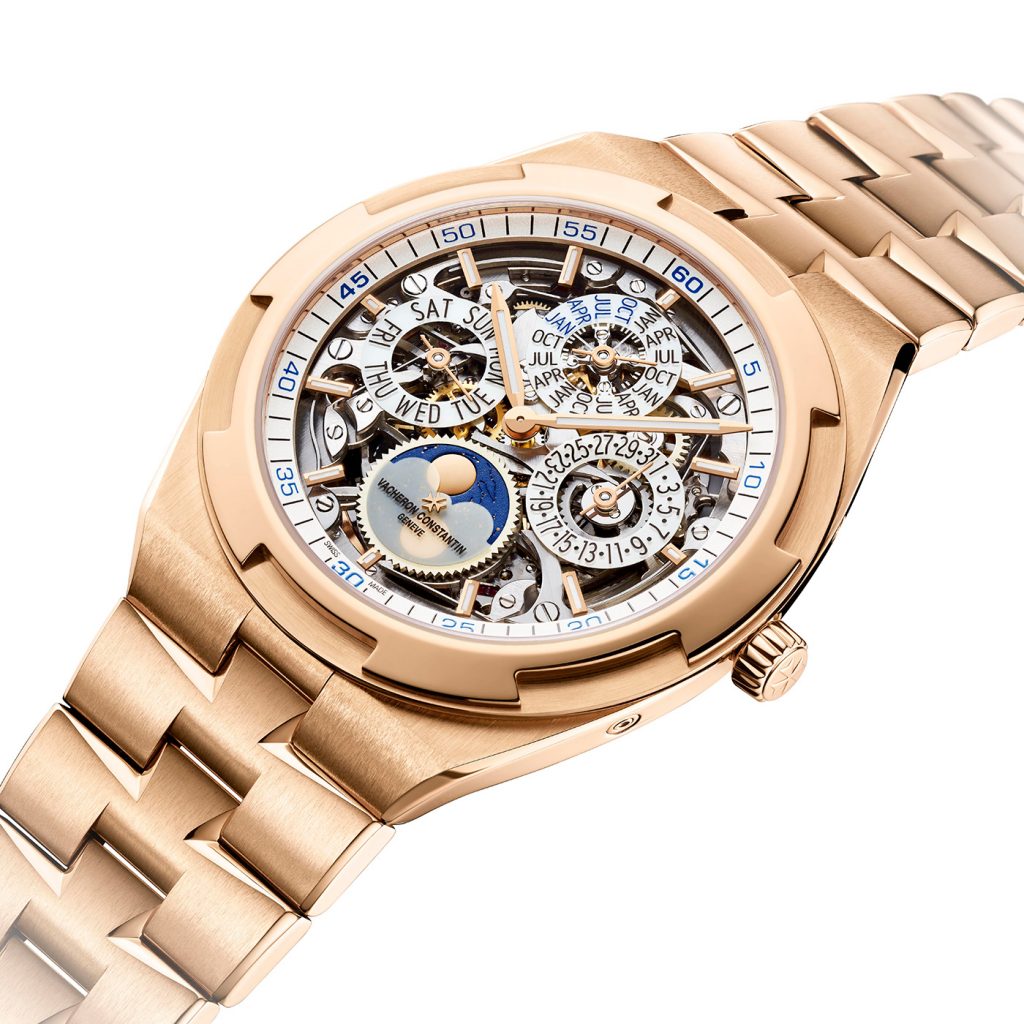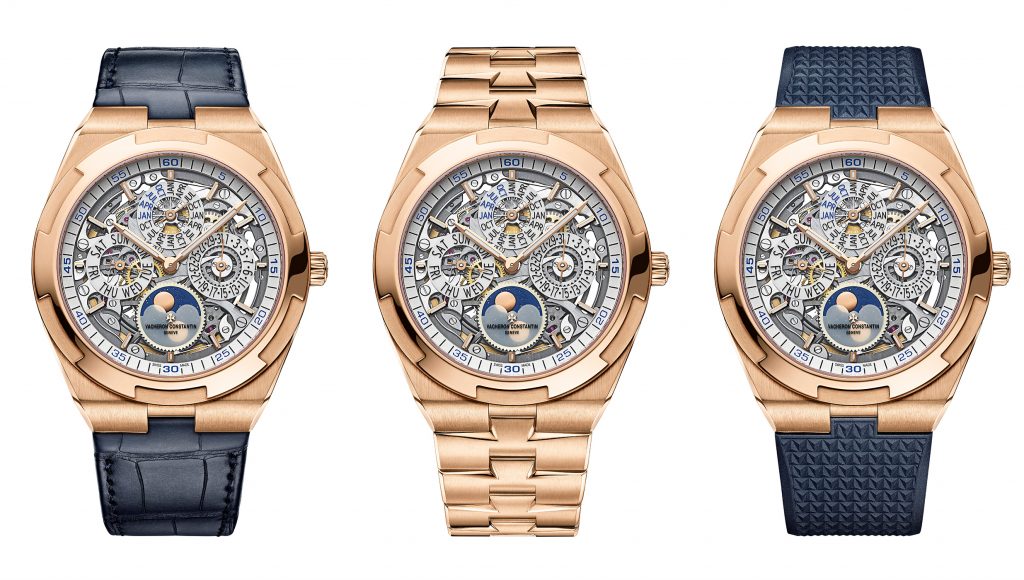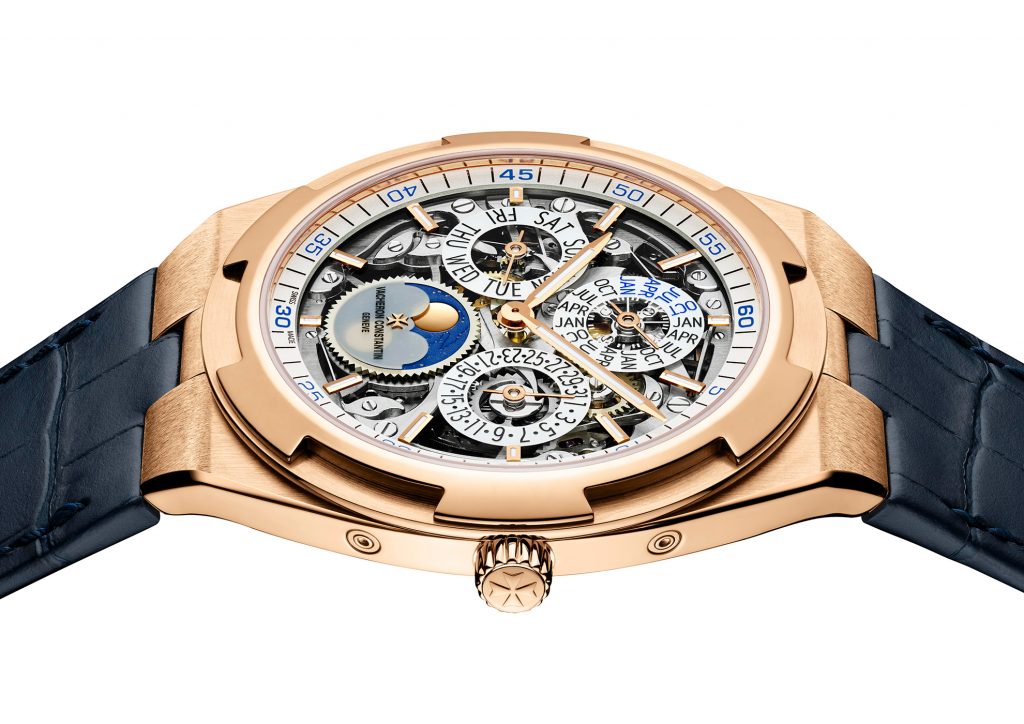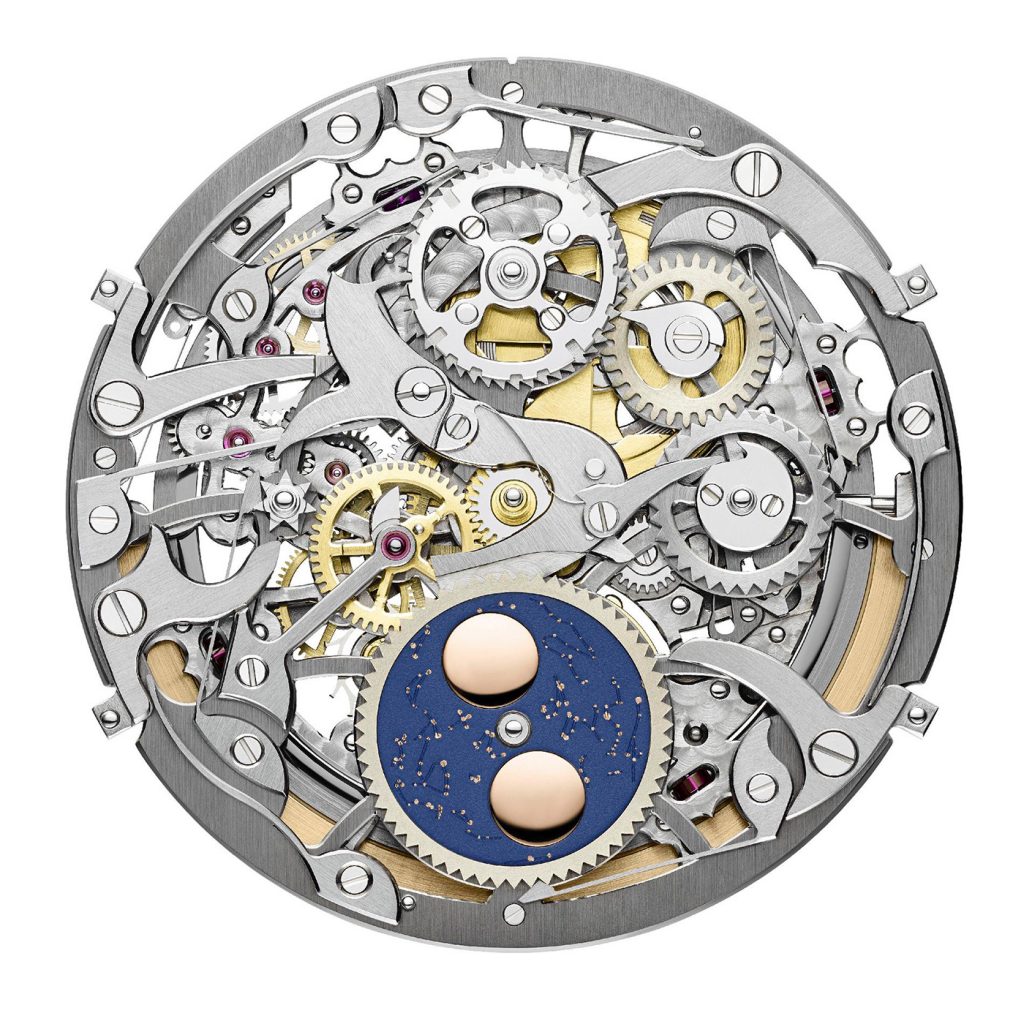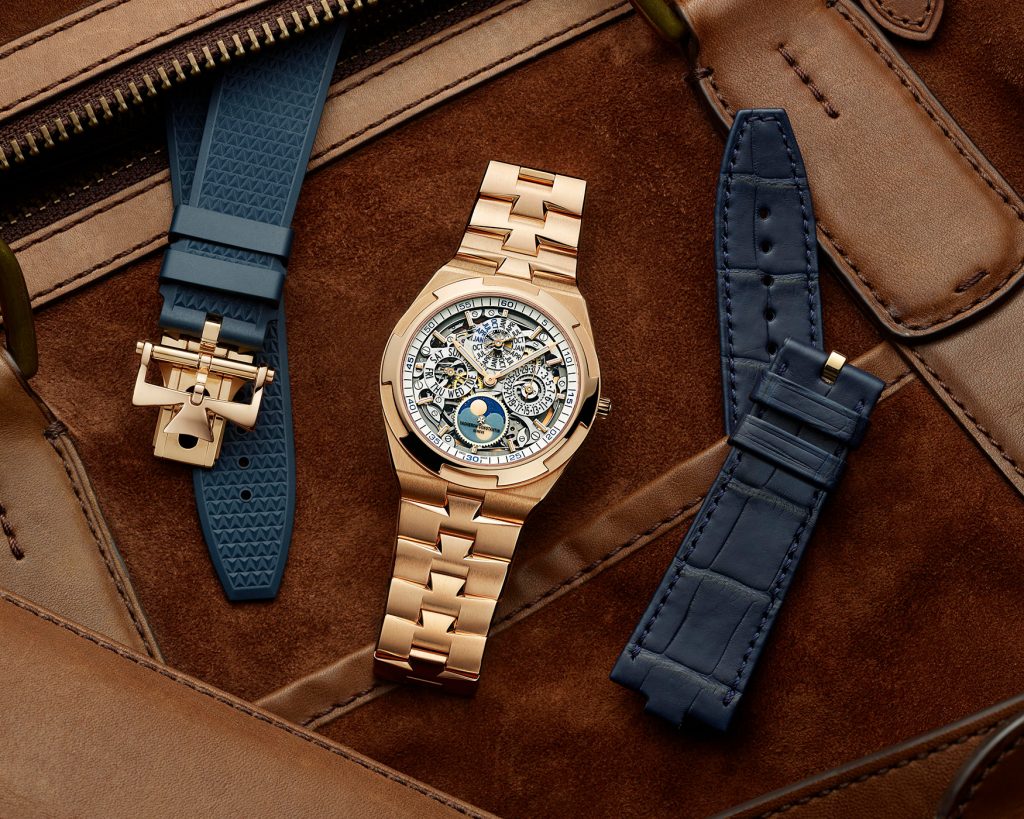Having a sports watch with an integrated bracelet was all the rage back in the 1970s. Having a steel sports watch that not only looked the part but was also a tool watch that would accompany you through pretty much everything and be your faithful wristwatch companion, was essential. The Royal Oak, designed by one Gerald Genta, was AP’s answer to this conundrum. Patek Philippe had theirs in the form of the Nautilus (also design by Mr. Genta) and Vacheron Constantin had what was called at the time, the ‘222’ (design by a young Jorg Hysek), which marked the brands 222th anniversary. It would later evolve into the Overseas via the 333 and Phidias. Last week, Vacheron introduced a new solid 18-carat rose-gold Overseas Perpetual Calendar Ultra-Thin but this time with an openworked dial and movement.
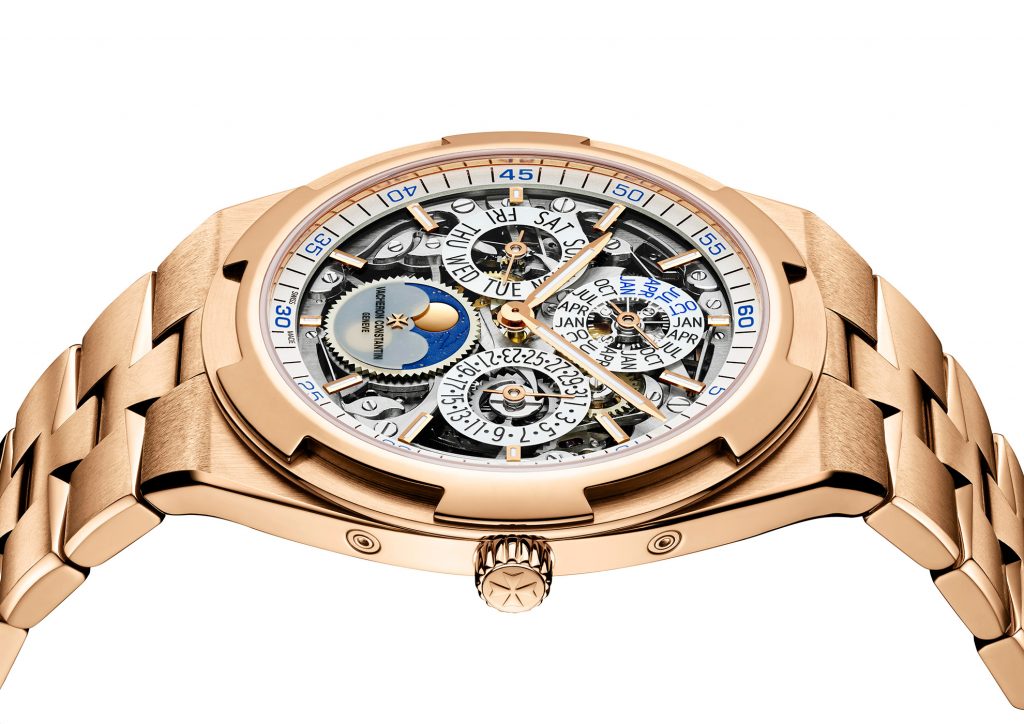
The Overseas has always been a timepiece that wasn’t designed to be a sports watch but more of a casual/leisure, timepiece. When you think about it, sports watches are made for sports and while the Overseas can be worn during said sporting activities, it is also a discreet model which can be worn with pretty much any attire. I’ve always been rather fond of the 222 but never really appreciated the Overseas until these new ultra-thin models were introduced. These new Overseas models have a more seemingly timeless appearance but one that is still very contemporary.
The case features a six-sided bezel and the fluted crown with grooves that evoke the Maison design codes. The rounded, polished and satin-finished opening dips towards a refined dial topped by a sapphire crystal glare-proofed on both sides. The screwed-down case back fitted with a sapphire crystal reveals a NAC-coated skeletonised oscillating 22-carat weight adorned with the Maltese cross, something of a first for Vacheron.
The use of an integrated bracelet is something that is rather emblematic of these 70s casual, sports wristwatches but with wearers wanting to change the look and feel of the Overseas, every now and then, Vacheron started to make versions of the Overseas with leather and in some cases rubber straps. Vacheron took this concept a little further on the new Overseas released a few years ago. Each Overseas model is supplied with at least two types of easily interchangeable bracelets, including a solid 18-carat gold bracelet, leather and the all-important utilitarian rubber strap. An ingenious interchangeability device for the bracelets/straps and the folding clasp, serves to secure them in place without any need for tools. And while this is something extremely new, just the fact this can be done on a Vacheron Overseas, I think is pretty darned cool.
The original 222 housed the calibre 1120 developed by Jaeger-LeCoultre as the calibre 920 in 1967 for exclusively joint use by Audemars Piguet and Vacheron Constantin but it is interesting to note that JLC themselves never actually used this movement. Ironically enough, the big three (AP, Patek and Vacheron) are known to have used this same ebauche for their leisure/sports wristwatch equivalents launched in the 70s. This Overseas QP (Quantième Perpétuel) makes use of the original calibre 1120 with addition of the perpetual calendar complication (QPSQ/1), which has been developed and crafted by Vacheron Constantin to Poinçon de Genève standards.
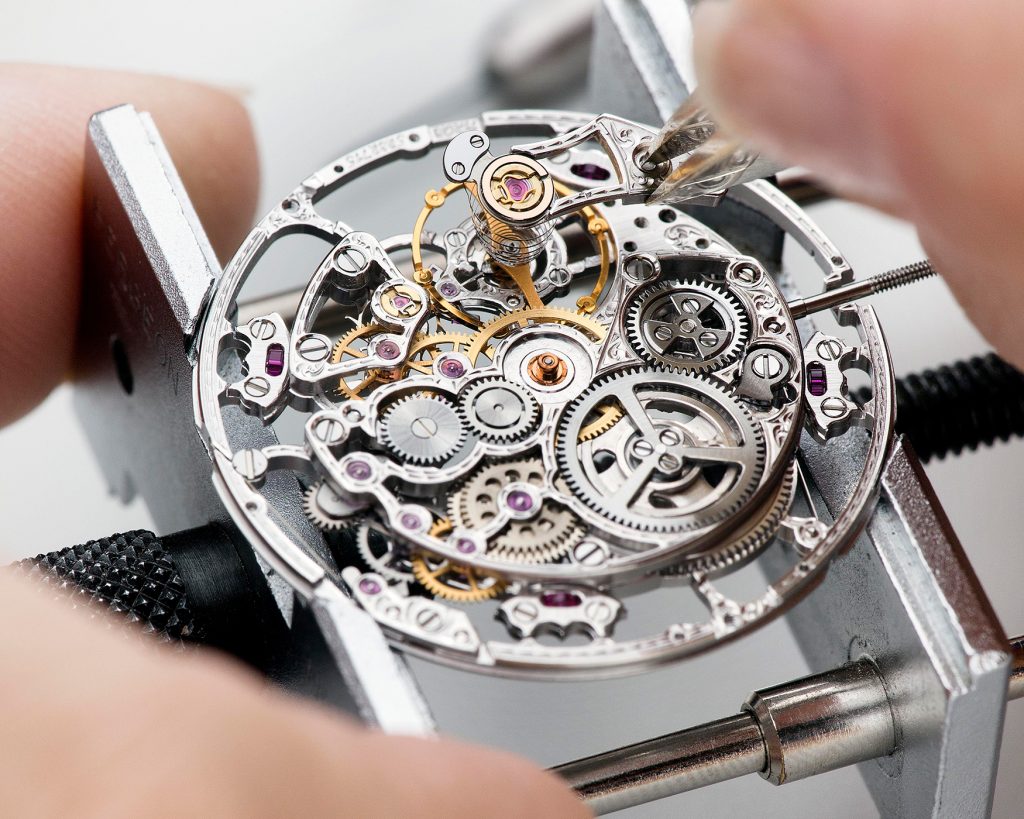
Vacheron are well-known for their openwork dials and complex skeletonised movements; a feat not easily achieved and is a skill which takes many, many years to master. This technique consists of finely openworking a mechanical movement by hollowing out its components but without compromising their reliability and robustness. All components of the 1120 QPSQ/1 calibre have been hollowed out, finished and decorated, adding beauty to the otherwise unseen mechanism.
The skeletonised dial features suspended gold markers attached to the white minute track and matching hands, both inlaid with luminescence. The perpetual calendar is indicated using three seemingly floating white sub-dial rings. At 3 o’clock is the date indicator, with the day at 9 o’clock and the leap year and month indicator at 12 o’clock. There are varying ways to display the leap year but the Overseas Perpetual Calendar Ultra-Thin uses a single hand for both, which makes one full revolution every four years. It is a pretty nifty mechanical solution because you need only to put a hand on the program wheel, which turns once every four years, giving you an integrated month and Leap Year indicator.
The QP system is rather simple and this simplicity is also carried over in setting it up. While the method over setting it up isn’t fool-proof, it is at least straightforward. Setting the day of the week, date, and month is done via push-pieces that are recessed into the case, which index the wheels of the respective indications; the moonphase has its own separate corrector, which can be advanced without affecting any of the other indications. And while we are on the subject of the moonphase, you’ll notice this is no ordinary one.
FLEETING THOUGHTS
In my humble opinion, this is perhaps my favourite Overseas implementation, since the inception of the Overseas back in 1996. This Ultra-Thin Overseas harks back to the roots of the 222, as it makes so much more sense as a slim watch. The subtleness of angles on these newer Overseas afford a much more elegant look and feel, something I think the previous version lacked, which made them a little too aggressive in my opinion.
The Vacheron Constantin Overseas QP Ultra-Thin Openworked is exclusive to VC Boutiques and is only available in 18-carat pink-gold on a matching metal bracelet. It is priced at €130,000 and comes with an additional leather or rubber strap. For more information visit vacheron-constantin.com.
